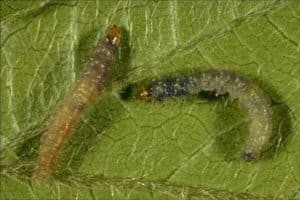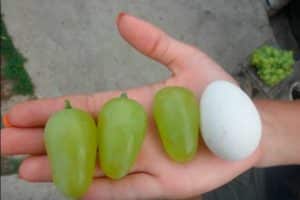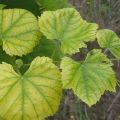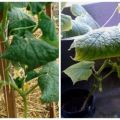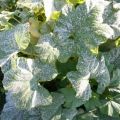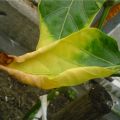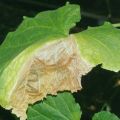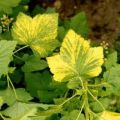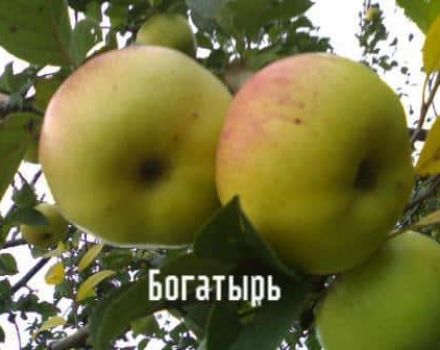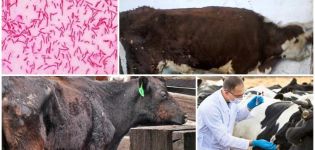Why do grape leaves turn yellow and dry, what to do and how to process
Grapes - perennial vines, refers to cultivated plants grown for the production of juices, drinks, raisins, extracts and homemade preparations. Growing a healthy bush is quite a challenge, especially for novice gardeners. Often, yellowed leaves are the first signal of a disease or pest. What to do if grape leaves turn yellow, what is the reason.
Why can grape leaves turn yellow?
To grow grapes, you need to follow the cultivation techniques and take preventive measures. Grape leaves can turn yellow for several reasons:
- The soil is oversaturated with fertilizers.
- Lack of nitrogen or potassium in the soil.
- Lack of watering in dry weather.
- Lack or excess of sunlight.
- Pests.
- Infectious, non-infectious chlorosis.
- Fungal diseases.
Beginner gardeners should pay special attention to time and mind feeding grapes... Improperly applied fertilization or frequent feeding affects the formation of the vine and the yield. Improperly applied manure or poultry droppings, which give off large amounts of carbon dioxide and increase chlorosis, are especially dangerous.
Lack of nitrogen may be accompanied by other symptoms: decreased yield, formation of spots - burns, stunted growth, crushing of new leaves.
Potassium deficiency manifests itself as yellowing of leaves along the edge and spreading further. Thanks to nitrogen and potassium in the soil, the vine grows intensively, ripens quickly and safely tolerates winter frosts, and also saturates the berries with taste and aroma. And also the lack of magnesium and iron contributes to yellowing.
On hot summer days, an adult, and especially a young seedling, needs intensive watering, its absence weakens the plant's immunity to many diseases. Water deficiency contributes to wilting and drying of the grape root system, after which the leaves begin to turn yellow, dry and fall off. And excessive watering during such a period can contribute to the development of fungal diseases.

It is especially important to choose the right planting site for the grapes. Some varieties like a shaded place, others - sunny. An excess for some and a deficiency for others can affect the proper development of the plant and the yellowing of the green mass, weakening the vines.
Large and small pests can damage the root system or suck sap from leaves. Rodents, such as a mole, mice, bears, eat up the root system, or they can infect with a disease, after which the leaves on the vines begin to turn yellow and fall off or wither. Onion fly larvae, grape mite or aphids also suck healthy juices out of them, the lack of which leads to yellowing and curling.
Chlorosis on grapes can be infectious and non-infectious due to the development of some factors:
- With an excess of lime in the soil.
- Unfavorable weather conditions - long rains.
- Soil depletion.
- Infection with nematodes.

First of all, it is necessary to eliminate the factors of chlorosis, cut off damaged specimens and feed the grapes.
It's important to know! If the bush begins to fade, then the upper leaves turn yellow, then chlorosis has arisen due to a lack of iron. If the bottom, then the lack of nitrogen. Along the entire length of young and old vines, you need to loosen the soil and make drainage grooves to remove excess water.
Fungal diseases, as well as chlorosis, can occur due to improper care, changes in the weather, pests that carry fungi from other plants. The most common diseases that lead to yellowing of green mass:
- Mildew is a dangerous disease that reduces the defenses of the plant and reduces the amount of harvest. The leaves begin to turn yellow in the form of spots, then dry and fall off.
- Oidium - spreads quickly throughout the vineyard, first a bloom of white appears on the plates, then on young vines, after which they turn yellow, turn brown and dry out. A plant treated at the wrong time runs the risk of not surviving the winter cold due to a decrease in frost resistance and weakening.
- Verticilliasis (wilt) manifests itself in the form of rapidly yellowing and drying leaves vine after vine, and subsequently the complete drying of the bush.
- Fusarium usually appears on the plant in early summer, often in June, yellow dry spots form on the leaves, which quickly spread throughout the plant.
- Alternaria occurs in mid - late spring, small yellow spots form on the leaves, after which they become gray, brown, black and dry out.
- Gray rot looks like a white bloom, which gradually grows throughout the bush, the leaves change color to pale green, then yellow and dry out.
- Root rot is the first sign: yellow leaves and weakening of young shoots, especially after heavy rains or in the absence of drainage.
- Black spot - can appear due to high humidity or when a disease is carried by pests. The affected areas begin to rot on the grapes, the leaves turn yellow, the color of the berries changes.
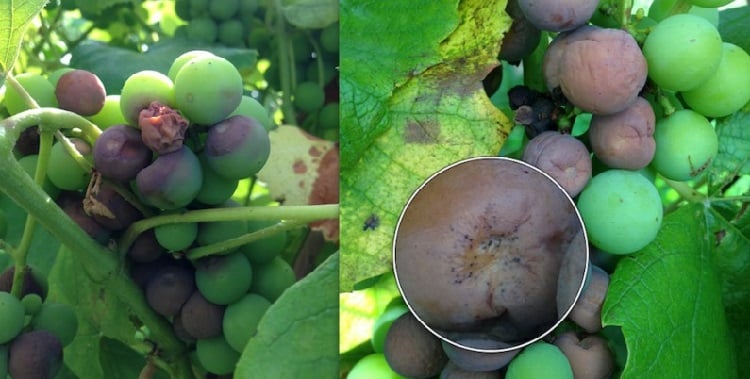
Yellowing can also cause anthracnose or bacterial cancer. Any change in the color of the leaves or a change in their shape should alert the owner and force them to take preventive measures to eliminate diseases.
Leaves turn yellow in an adult plant
An adult grape bush most often suffers from a lack of nutrients or diseases that are carried by rain, wind, pests, and gives signals in the form of yellowing of the leaf plate. Also, on vines by the end of summer, in August, premature aging of the leaves may begin, they begin to turn yellow from one edge, gradually covering the rest. The reasons for this yellowing can be:
- Sudden changes in temperature, during the day - heat, at night a decrease of 10 ° C or more.
- It also affects aging if there were frequent frosts in spring, summer was hot and humid, and late summer and autumn were cold.
Leaves located at the bottom of the bush or in the middle, where there is little access to sunlight, usually begin to turn yellow.

Edaphic chlorosis can also occur, caused by climate change, changes in soil composition, acid rain, replanting a bush or grafting a rootstock.
Yellowing of leaves in young grapes
Rooted cuttings or young seedlings are most susceptible to external influences, they immediately react to improper handling.This is primarily reflected in the leaves, which become pale green and begin to turn yellow: in spots, throughout the plate, except for the veins. It is highly likely that improper care has contributed to the onset of non-infectious chlorosis:
- Watering with cold water.
- Lack of soil aeration.
- Incorrectly selected fertilizer, which can cause yellowing of the entire vine or upper young leaves.
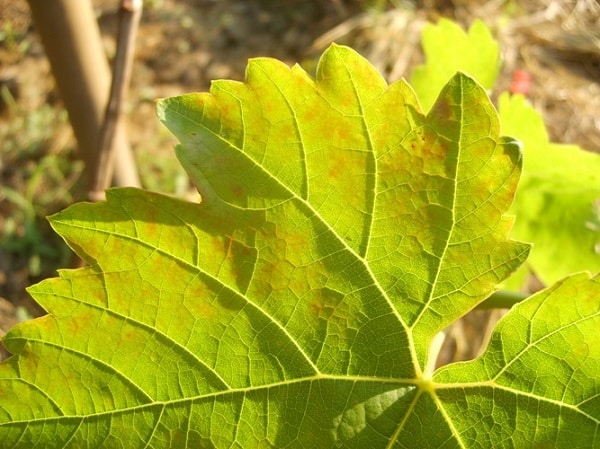
Therefore, in the first years of cultivation, any grape requires special attention and adherence to agricultural technology.
What to do if the leaves start to turn yellow?
Before you start treating with chemicals or pouring fertilizers, you need to find out the reason why the leaves began to turn yellow:
- Completely inspect the plant for pests and fungal spores.
- Examine diseased leaves. Where it starts to turn yellow or after that. If the entire plate turns yellow, withers or twists, the bush lacks moisture or, conversely, dry soil. The presence of holes or bumps in the soil around the bush may indicate rodents that have damaged the roots. If at the same time the plant stopped growing, the vines wither or dry out, it means that the plant has overcome root rot. Rodents need to be fought with bait or deterrent devices.
- If yellow or brown spots appear in the middle, which then darken and dry out, or the disease begins to spread along the vines and berries - black rot, oidium, mildew. In this case, fast and effective treatment is needed so as not to lose the bush.
- If the entire leaf turns yellow, but the veins remain green, this is non-infectious chlorosis, which is treated by fertilizing with iron, nitrogen, potassium, manganese. Treat the leaves with iron chelate or pour over with iron vitriol.
- If there are small insects on the inside of the leaf, and a yellow spot forms there, then they need to be removed mechanically and sprayed with an insecticide.
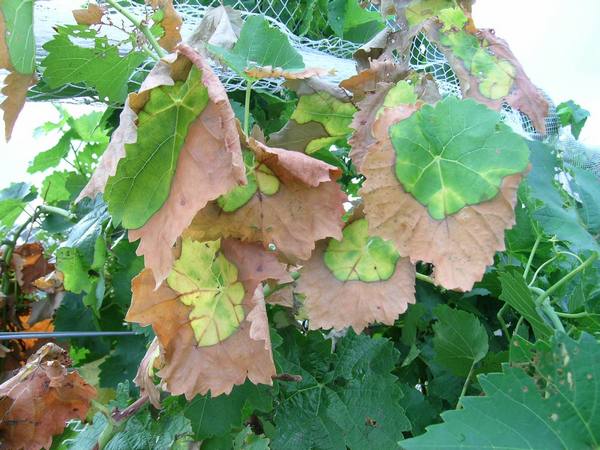
After finding out the reason, you need to choose the right drug or fertilizer complex, which is used in accordance with the instructions.
Preventive measures
Disease prevention should begin with harvesting leaves and weeds around the plant, which are often the cause of infection. The second important point of preventive measures is treatment in the spring when new buds appear, then when the leaves are blooming with such preparations:
- bordeaux mixture;
- "Aktofit";
- "Fitosporin";
- "Trichodermin";
- iron vitriol;
- "Maxim";
- colloidal sulfur;
- urea;
- "Vitaros".

The second time in the spring they spray preventively from awakened insects:
- preparation 30B;
- Topsin-M;
- Oxyhom;
- "Envidor".
The next treatment with drugs is carried out after flowering and harvesting, as well as in the fall before preparing for winter.
It is also very important to loosen the soil around the bush, add sand, peat, light mixtures so that the air permeability of the soil is better. When transplanting grapes, make a large drainage layer so that the roots do not rot. If the bush cannot be transplanted, then make grooves around it to remove excess water.
You need to apply complex fertilizers in early spring, during flowering, in autumn. And it is better to take the soil to the laboratory in order to find out what is missing in the soil, its acidity, and then add individual elements to improve the composition.
Most grape varieties require careful maintenance and proper planting, newer varieties are less demanding and have better immunity against disease. It takes a lot of effort to grow a healthy shrub with a bountiful harvest.
